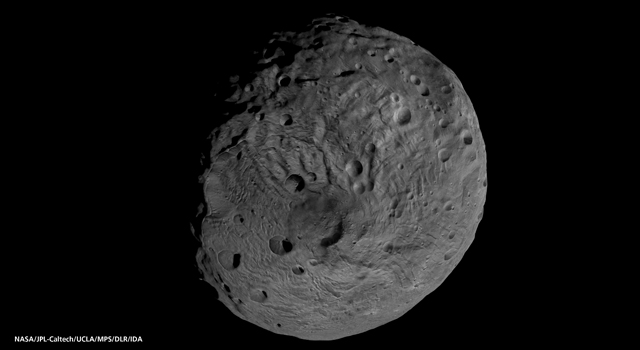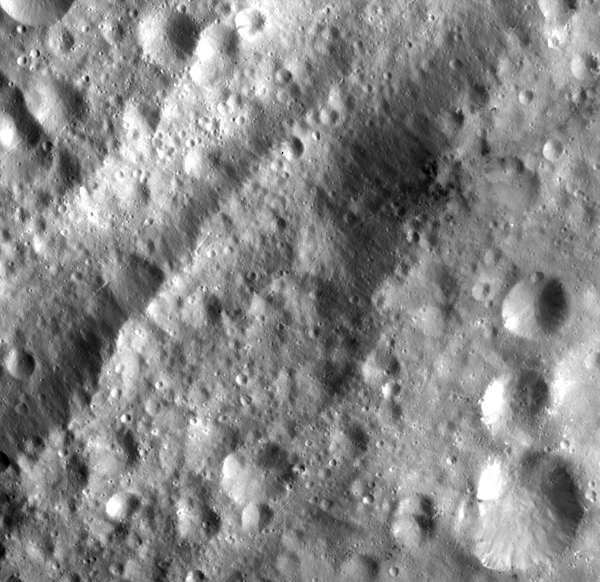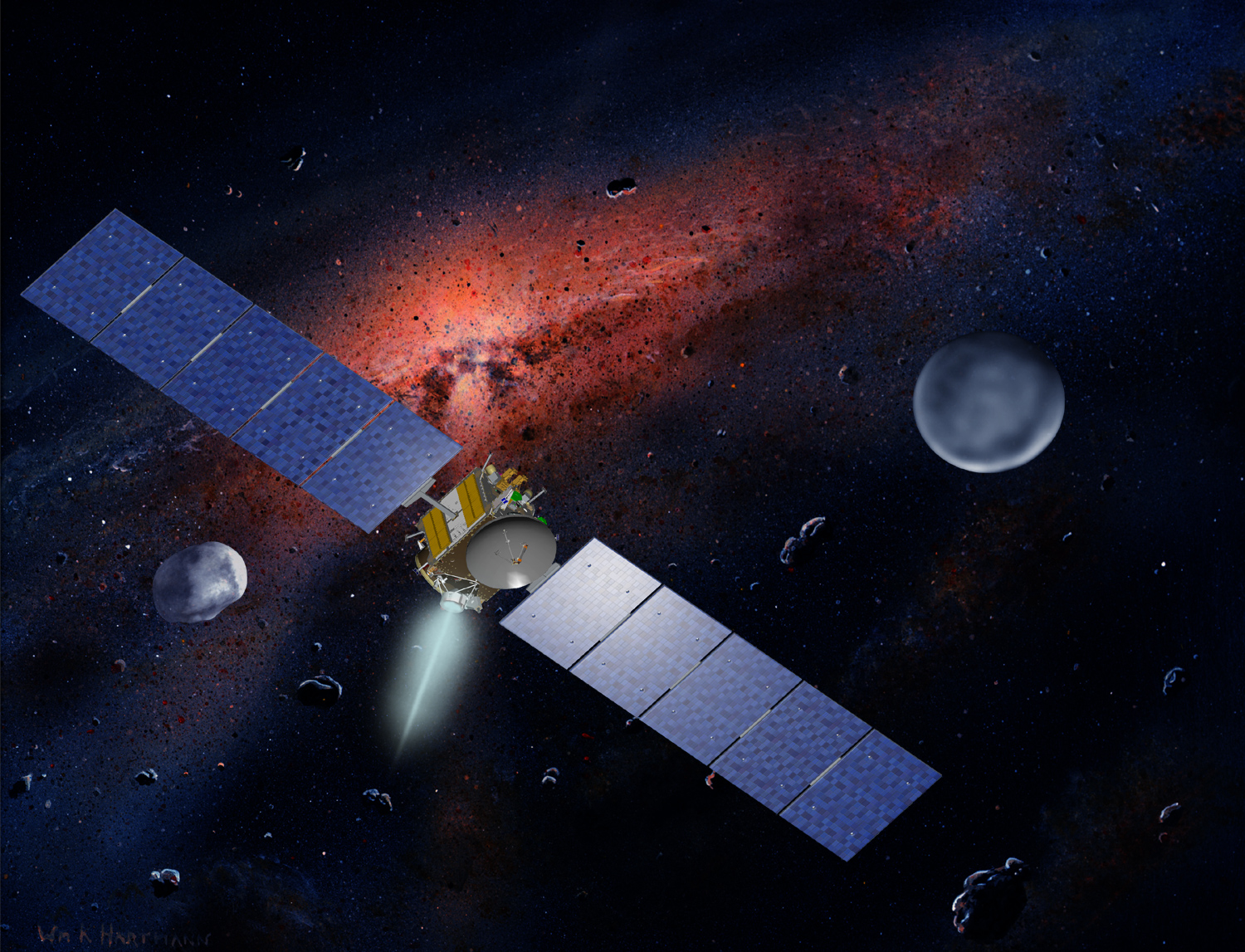Dawn Goes Over ‘n’ Out
Monday, June 4th, 2012
As NASA’s Dawn spacecraft investigates its first target, the giant asteroid Vesta, Marc Rayman, Dawn’s chief engineer, shares a monthly update on the mission’s progress.

On May 3, 2011, the mapping camera on NASA’s Dawn spacecraft captured its first image (left) of the giant asteroid Vesta. Only 5 pixels across, the image didn’t provide any new information about the asteroid, but it was important for navigation purposes and provided an exciting first look at Dawn’s eventual target. About five months later, Dawn snapped the much more detailed image on the right from only 700 kilometers (435 miles) from the surface of Vesta and has since provided unparalleled views of the mysterious world. Image credit: NASA/JPL-Caltech
Dear Readers of all Dawnominations,
Far from Earth, on the opposite side of the sun, deep in the asteroid belt, Dawn is gradually spiraling around the giant protoplanet Vesta. Under the gentle pressure of its uniquely efficient ion propulsion system, the explorer is scaling the gravitational mountain from its low-altitude mapping orbit (LAMO) to its second high-altitude mapping orbit (HAMO2).
Dawn spent nearly five months in LAMO, circling the rocky world at an average altitude of 210 kilometers (130 miles) as it acquired a fabulous bounty of pictures; visible, infrared, neutron, and gamma ray spectra; and measurements of the gravity field. As we saw last month, the probe was far more productive in each investigation than the ambitious team members had expected or had ever dared hope it would be. With that outstanding success behind it, it is looking ahead and up to its work in HAMO2, about 680 kilometers (420 miles) high.
Dawn is the first spacecraft to explore Vesta, the second most massive resident of the main asteroid belt between Mars and Jupiter. Indeed, this is the only craft ever to orbit a body in the asteroid belt. No other missions are currently on the books to visit this remote, exotic world, which is now appreciated to be more closely related to the terrestrial planets (including Earth) than to typical asteroids. And now Dawn is receding from it. On May 1, it began the slow ascent to its next observation orbit. It may well be decades before another robotic ambassador from Earth comes as close to Vesta as this bold traveler has.
Humankind’s first exploration of Vesta has been exceptionally rewarding. A simple measure of that can be seen with just two photographs. More than two centuries after its discovery, this giant asteroid was first glimpsed by the approaching spaceship from Earth on May 3, 2011. From a distance of 1.2 million kilometers (750 thousand miles), or more than three times the separation between Earth and the moon, Dawn’s mapping camera perceived Vesta as only five pixels across. Each pixel spanned more than 110 kilometers (70 miles), revealing nothing new compared to what astronomers’ most powerful telescopes had shown (but the image was of importance for navigation purposes). Nevertheless, at the time, it was tremendously exciting to obtain the first views of a distant, unfamiliar shore after a voyage of more than 2.6 billion kilometers (1.6 billion miles) on the interplanetary ocean. Sighting our first celestial port of call more than three and a half years after this cosmic adventure began was thrilling indeed. But now, with more than 25 thousand spectacular photos in hand from much smaller distances, it is even more gratifying to acknowledge that first picture as one of the worst ever taken of Vesta. The Image of the Day from one year later
was acquired in October 2011 from 1,700 times closer; and most of the images have been obtained from LAMO, about 5,700 times nearer than that first one. Dawn has rapidly transformed Vesta from a mere fleck among the stars into a fascinating, complex and splendidly detailed world.
Keeping the remote vessel on the planned spiraling course from one mapping orbit to another presents the crew with a set of formidable challenges, but this team has accomplished the maneuvers to successively reach survey orbit, the first high-altitude mapping orbit (HAMO1) and LAMO. The current orbital transfer is complex and demanding, but it is proceeding very well. Controllers update the flight profile every few days to ensure the probe stays close to the carefully designed trajectory to HAMO2. To gain a sense of the progress, go here for your correspondent’s atypically succinct weekly summaries of the spiral status.



























